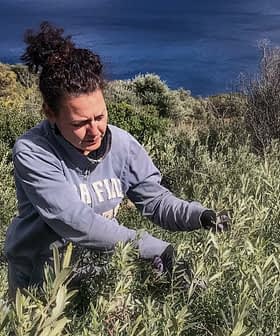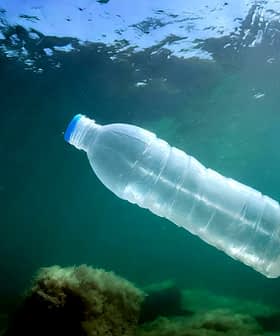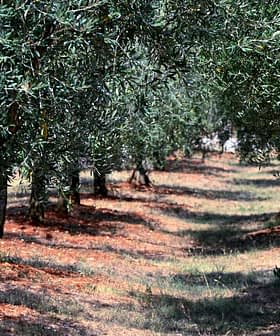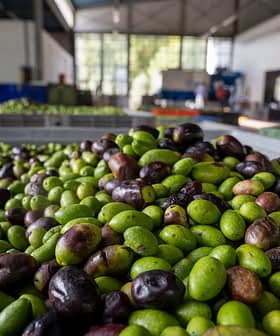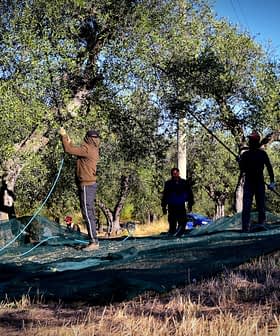 7.6K reads
7.6K readsGrades
Lab Test Would Define the Sensory Profile of Olive Oil by Analyzing Its Molecules

Researchers in Italy are developing a new scientific procedure to identify volatile compounds in extra virgin olive oil, aiming to enhance quality confirmation and determine organoleptic characteristics. The new analysis tool, based on scientifically-sound technology, could lead to improved labeling, differentiation of products, and support for extra virgin olive oil sales through various channels.
Researchers and olive oil producers in Italy are one step closer to completing a new scientific procedure for identifying the volatile compounds of extra virgin olive oil.
The goal is to add a laboratory analysis to the routine tests done by extra virgin olive oil tasting panels to confirm quality and determine organoleptic characteristics.
One of the most relevant challenges has been identifying how a specific molecule was related to the organoleptic feedback and which molecules corresponded to a positive attribute or a negative one.
The Italian Association of the Edible Oil Industry (Assitol) asked producers and laboratories across Italy to participate in the last testing phase.
“We are talking about a new analytic system capable of evaluating the sensorial profile of extra virgin olive oil,” Anna Cane, president of Assitol’s olive oil group, told Olive Oil Times.
See Also:Researchers in Spain Investigate Positive Organoleptic Attributes of EVOOAccording to current European Union regulations and International Olive Council standards, evaluating the quality of extra virgin olive oil requires a panel test.
“It is a method based on human abilities, as it requires at least eight expert tasters who follow an established procedure,” Cane said. “Their sensorial organs constitute the equipment of the panel test analysis.”
“The new analysis tool is based on scientifically-sound technology,” she added. “It allows us to extract the volatile compounds of extra virgin olive oil and identify the specific molecules, which come in hundreds.”
According to Assitol, the whole sector would benefit from the new analysis procedure once it is perfected and translated into a legal standard. One of the advantages would be the ability to analyze a large number of samples from different suppliers.
“The new method might allow a first screening of the samples to exclude those that do not fit the desired profiles quickly,” Cane said. “It could greatly speed up the procedures and support the panel test operations.”
Additionally, Assitol believes this approach would improve the information given to consumers.
“Today, we have limited options to include sensorial indications on extra virgin olive oil labels,” Cane said. “We can only use ‘fruity,’ ‘bitter’ and ‘piquant’ as they are those determined by the sole legal analytic system, the panel test.”
As many consumers are not yet aware of extra virgin olive oil organoleptic qualities, most producers only use the attribute “fruity” on their labels, shunning “bitter” and “piquant,” or pungency.
“That means that extra virgin olive oils on sale are not sufficiently differentiated,” Cane said. “In the future, we could have an analytic tool capable of detecting herbaceous, artichoke, almond or many other positive attributes.”
“That could even help develop a new regulation on extra virgin olive oil labeling,” she added. “To display sensorial attributes on the label, today, those attributes must have been certified by an analytic system defined by law.”
The new labels could also support extra virgin olive oil sales through different channels, including food service. “Restaurants are the ambassadors of local quality products throughout the country,” Cane said.
Many restaurants in Italy feature different wines expertly paired with each meal. “Recently in Umbria, a maitre d’ spent 10 minutes explaining to my friends and myself the beauty of a Riesling bottle of wine, so we ordered it,” Cane said. “When I asked him for some extra virgin olive oil, he just put a bottle on the table.”
“When we asked him to tell us something about that extra virgin olive oil as he had done for the wine, he told us he did not know anything about it,” she added. “That is an example of how much we need to reach a new level of communication for extra virgin olive oil.”
Assitol emphasized how producers could also deploy the new system to evaluate olive oil blends alongside the panel test.
“It could help evaluate the profile of the blend a company aims to bring onto the market and verify that the product falls within the given standard,” Cane said. “[It would be] a laboratory confirmation which comes on top of the panel test results.”
See Also:Researchers Develop Cheaper, More Effective NMR Techniques to Test Olive OilCane also cited other potential advantages of the new system, such as allowing a producer to verify the stability of extra virgin olive oil over time.
“It could probably also be used to characterize monocultivar extra virgin olive oil,” she said. “There are many opportunities related to this new method.”
Assitol benefited from a series of earlier academic research when it started its task force focused on developing the new method in 2018. However, only a few olive oil producers and experts participated in the first testing phase.
“One of the most relevant challenges has been identifying how a specific molecule was related to the organoleptic feedback and which molecules corresponded to a positive attribute or a negative one, a defect,” Cane said.
As a result of the ongoing scientific research and the completion of the first testing phase, Assitol is now asking the whole industry to join in the development efforts.
The new testing phase is seen as crucial to complete the new approach. “In the new testing phase, we will be looking for a definite reliability of the information, a reproducibility of the analytic data and broadening the number of involved laboratories,” Cane said.
For an analytic system to be validated, it must comply with specific reproducibility requirements.
“The new method must be considered an addition to what we already have, which is the panel test,” Cane said. “The panel test has been crucial in improving the products ending up on the shelves.”
“In industries such as wine, coffee, tea or chocolate, this analytic approach based on volatile compounds has been studied and detailed more than in the olive oil sector,” she added.
“That explains the relevance of this research, as it adds to the panel test, a legal control method that other food sectors do not have at their disposal,” Cane continued. “The new approach strengthens the panel test’s work.”
According to Cane, most of the machinery needed for the new analysis method is likely already available in many laboratories. “Besides the right equipment, though, you also need to have the trained technician operating it,” she said.
The goals of the new method are similar to the European Union’s Oleum project, which is also in its final stages of development.
“The analytic system is very similar to Oleum,” Cane confirmed. “There is no competition to determine which system is better. We all want the same result as soon as possible; methods required by the current needs of the olive oil market.”
“And that means quick and reliable control and verifying systems, with reproducible results worldwide, sustainable and inexpensive,” she concluded.


